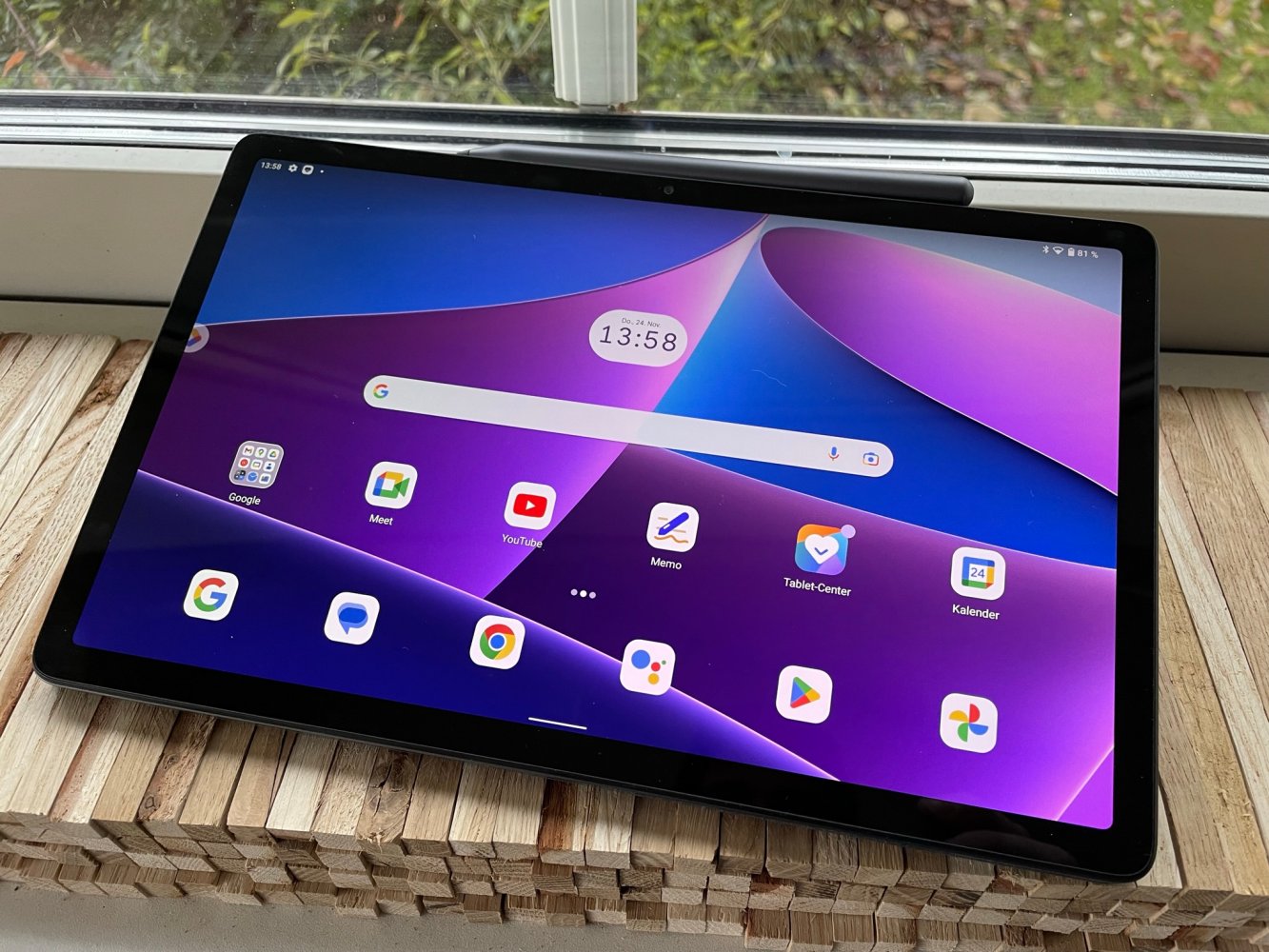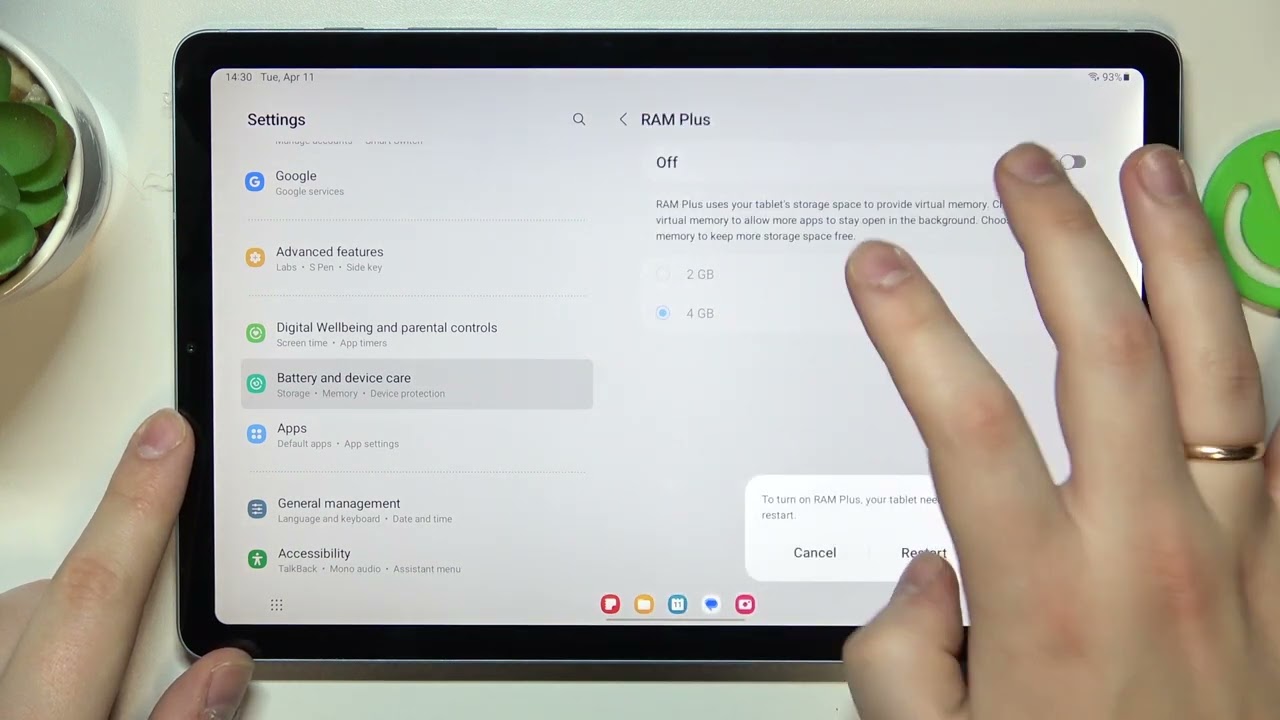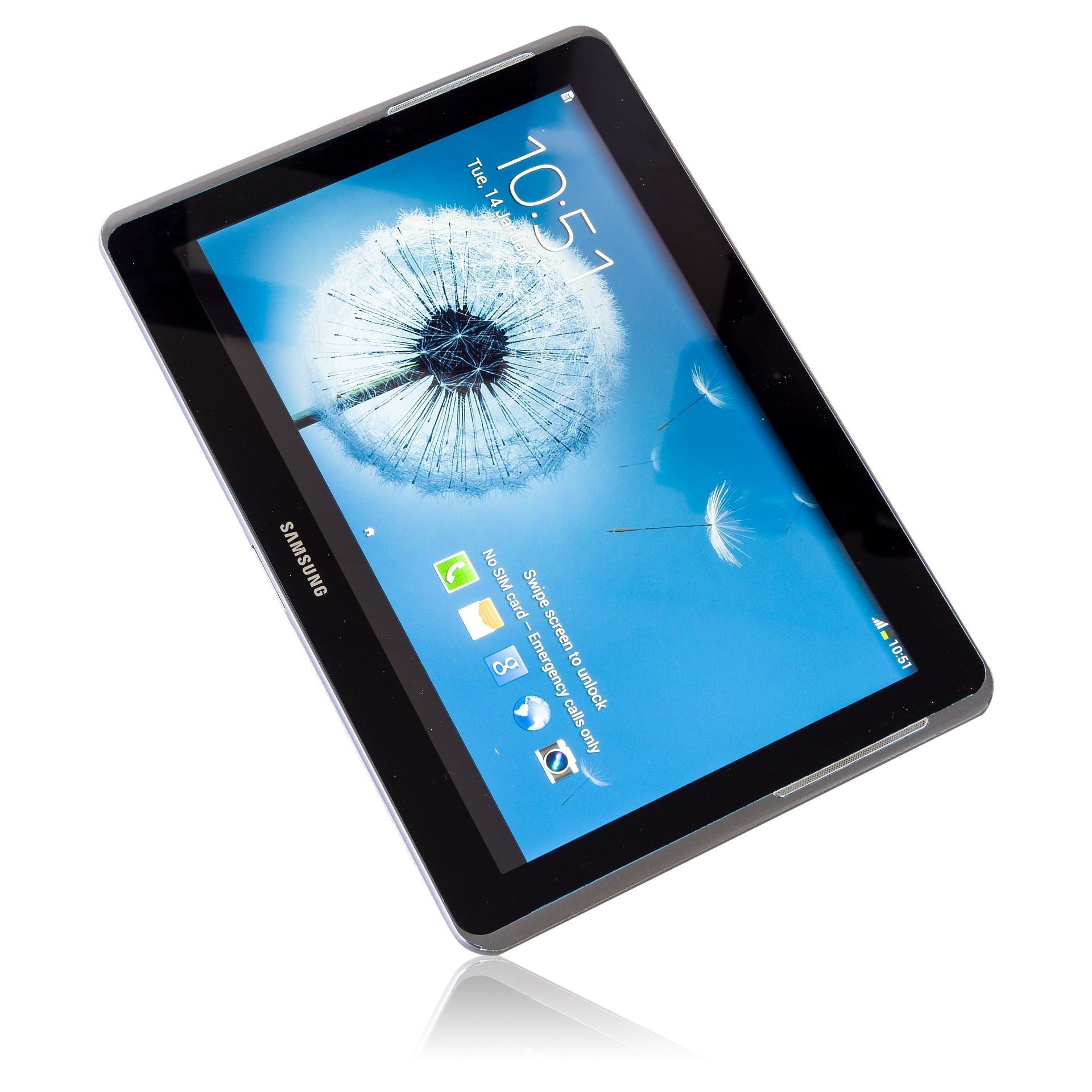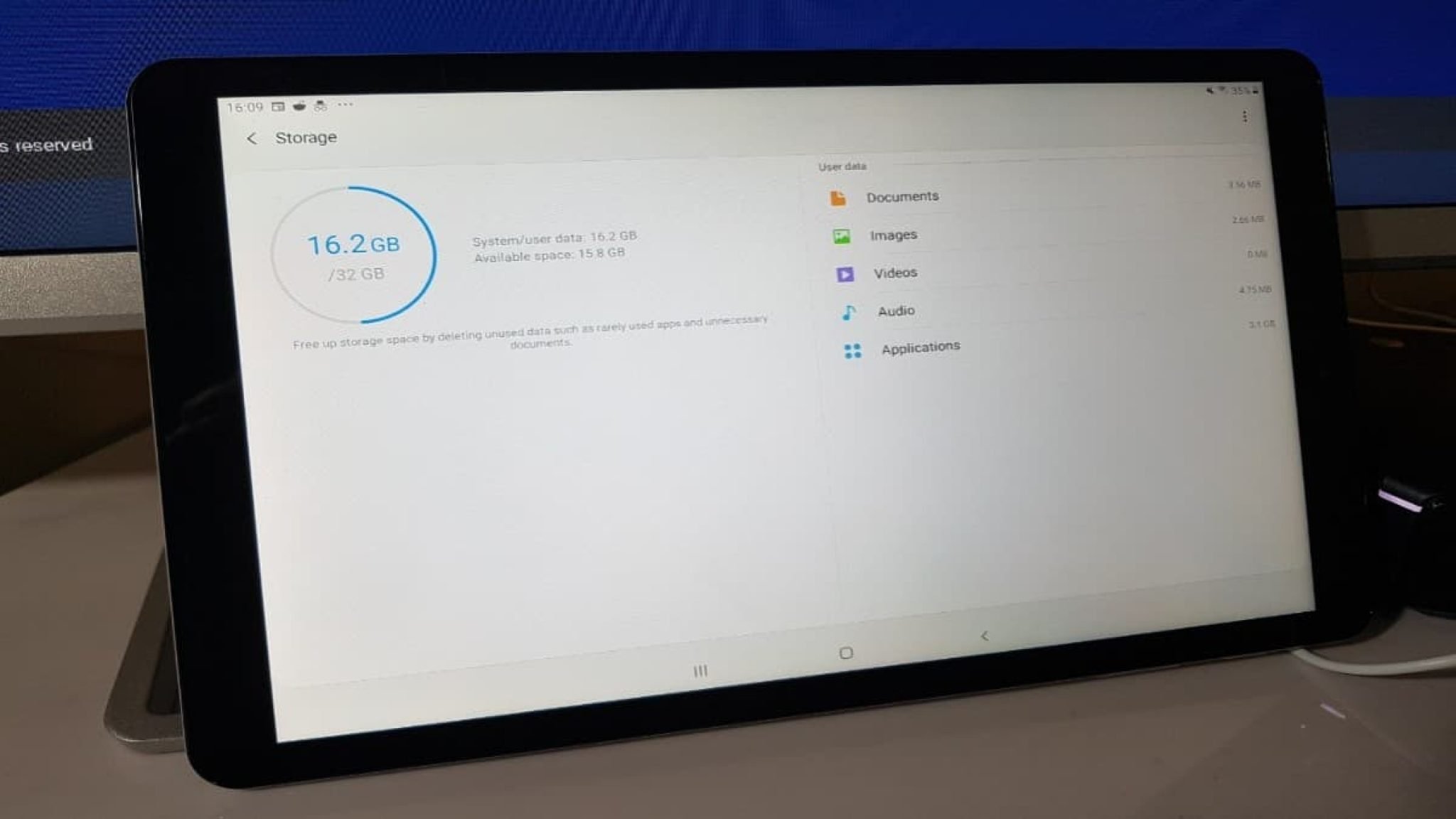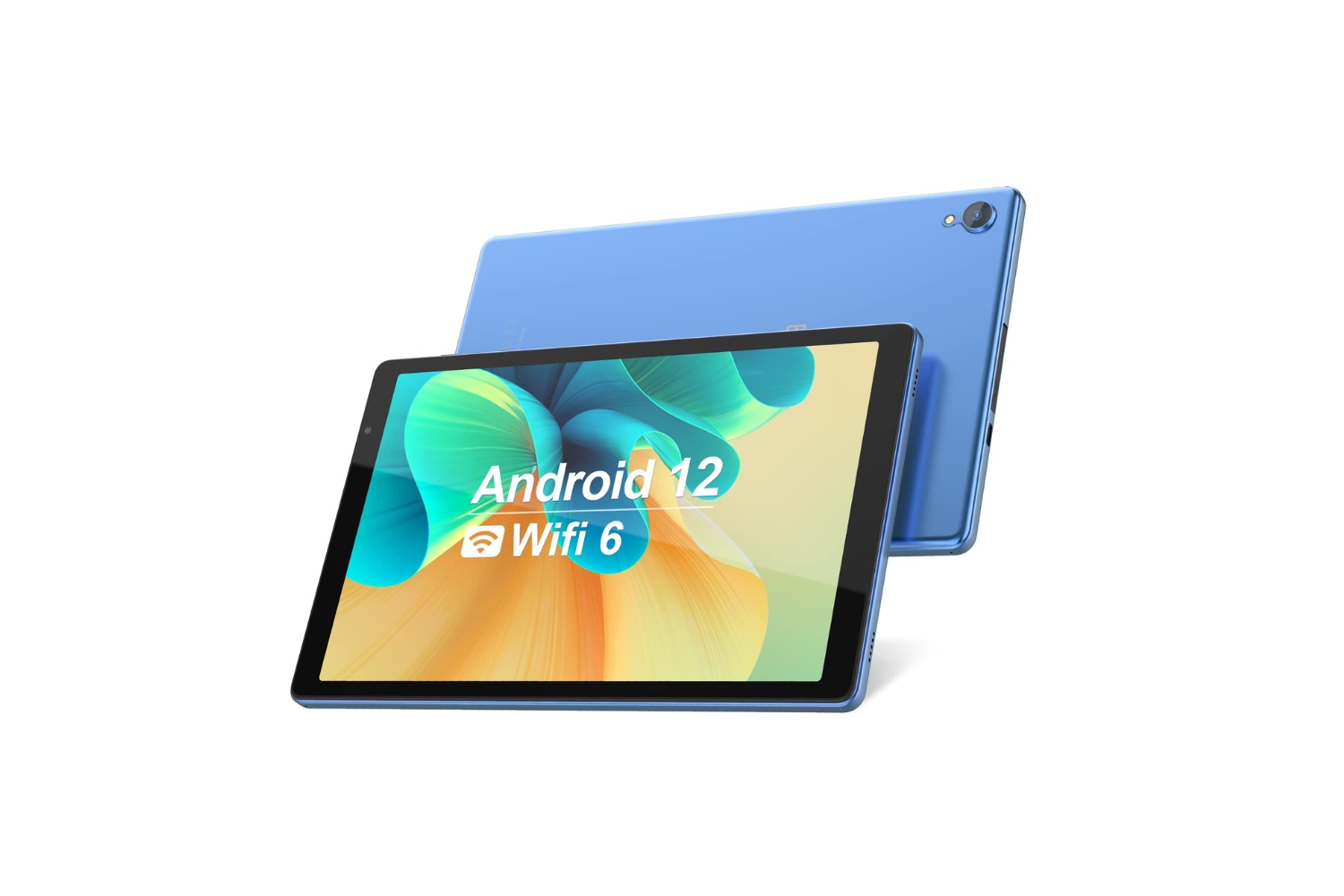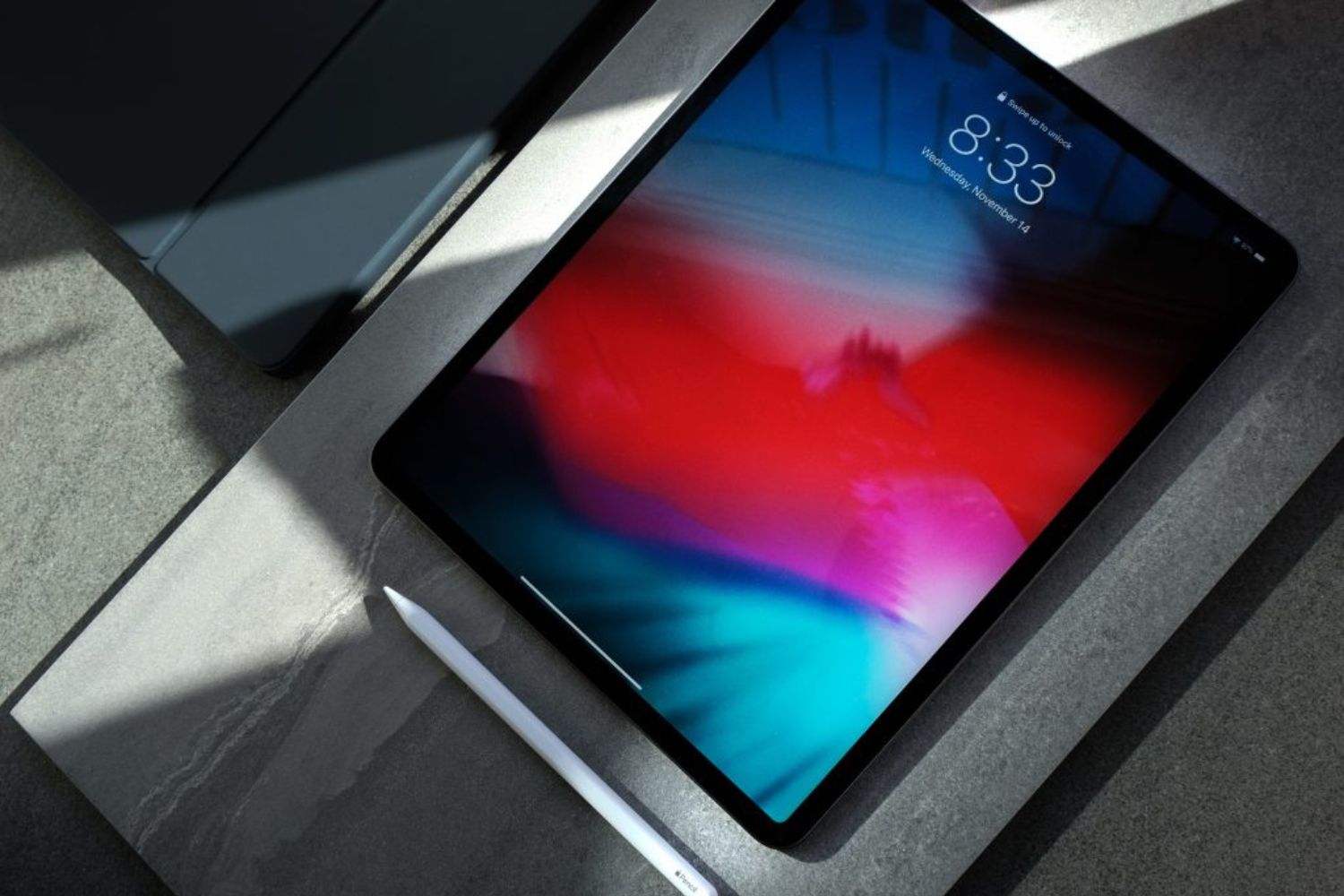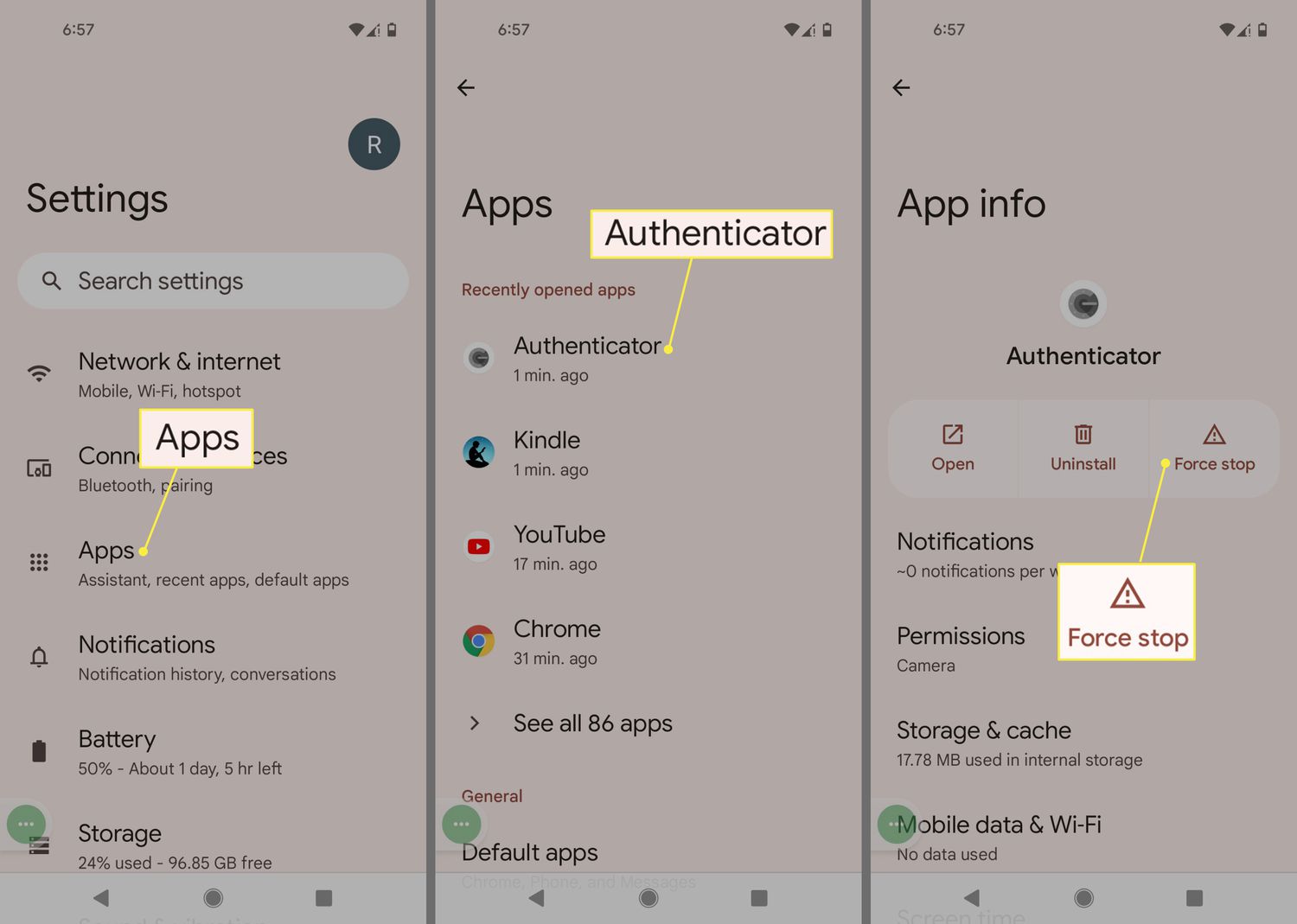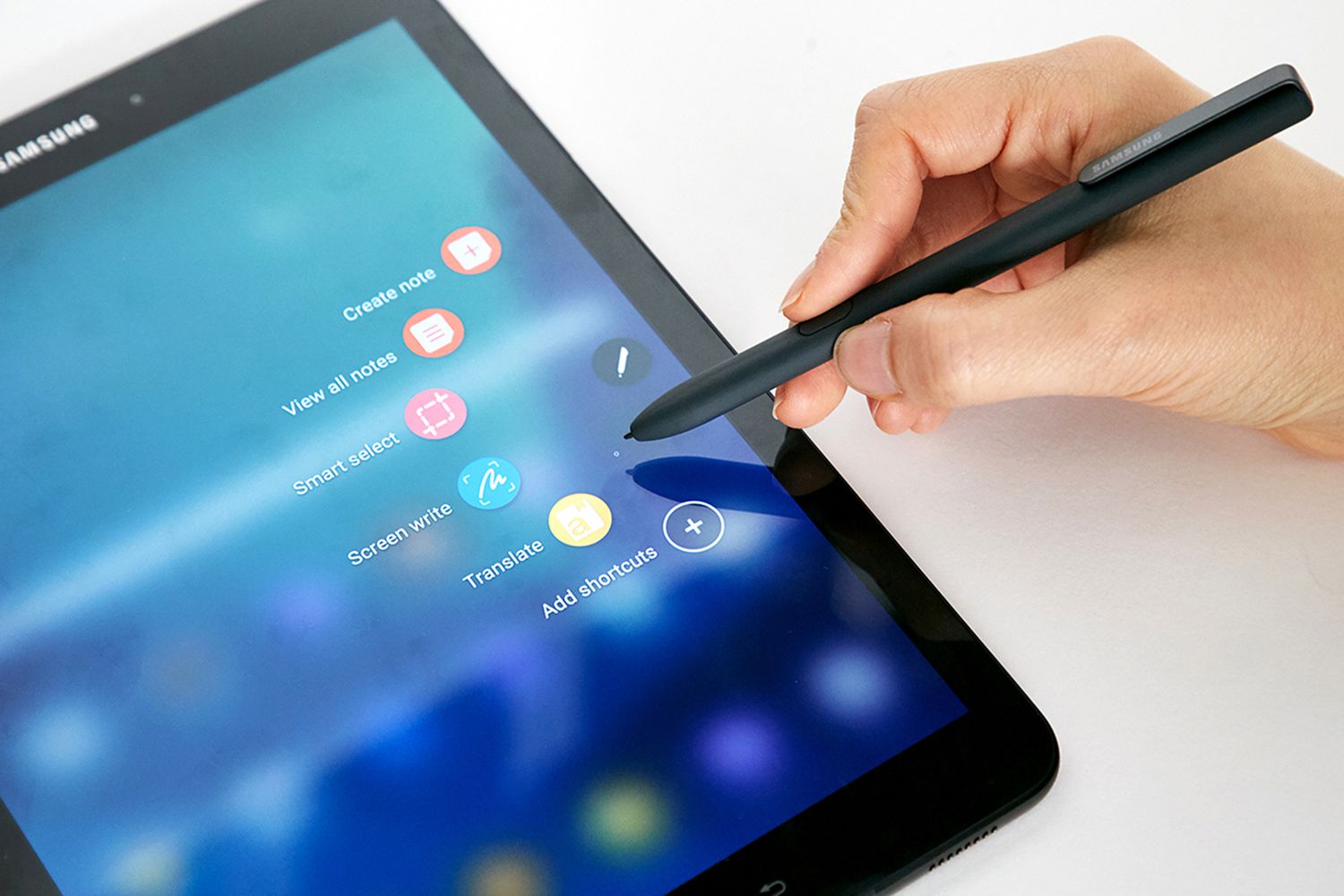Introduction
Welcome to the guide on how to reduce RAM usage on your tablet. If you’ve noticed that your tablet is running slow or experiencing lag, it could be due to excessive RAM usage. Random Access Memory (RAM) is a crucial component of your device that temporarily stores data for quick access by the processor. When the available RAM is running low, it can affect the performance and speed of your tablet.
Before we dive into the various methods to reduce RAM usage, it’s essential to understand why this issue occurs. Over time, as you install more apps, use memory-intensive applications, or open multiple processes simultaneously, it can lead to a higher RAM usage. This can result in slower performance, app crashes, or even freezing of your tablet.
However, fear not! There are several practical steps you can take to optimize your tablet’s RAM usage and improve its overall performance. In the following sections, we’ll explore some of the most effective strategies for reducing RAM usage on your tablet. By following these steps, you can enjoy a smoother and more responsive experience while using your device.
It’s worth mentioning that there is no one-size-fits-all solution for every tablet. The methods discussed here may vary slightly depending on the make and model of your device, as well as the operating system it runs. Therefore, it’s essential to tailor these techniques to suit your specific tablet and explore any device-specific optimizations that may be available.
So, if you’re ready to reclaim your tablet’s RAM, let’s dive in and explore the steps you can take to reduce RAM usage. By implementing these strategies, you’ll not only improve your tablet’s performance but also extend its battery life by reducing unnecessary system resources.
Close Unnecessary Apps
One of the primary culprits behind excessive RAM usage is having too many apps open simultaneously. Each open app consumes a portion of the available RAM, even if it’s running in the background. Therefore, it’s essential to periodically close apps that you’re not actively using.
To close apps on your tablet, you can typically use the recent apps or multitasking button, which is often located at the bottom of the screen. Tapping this button will display a list of all the apps currently running on your tablet. Swipe horizontally or vertically to navigate through the list, and then swipe an app left or right to close it. Alternatively, you can tap the close button, if available, on each app’s card.
Closing unnecessary apps not only helps free up RAM but also conserves battery life. Some applications continue to run in the background, consuming system resources and draining your tablet’s battery. By closing these apps, you can alleviate RAM usage and prolong your battery’s lifespan.
Additionally, it’s worth noting that some apps can have persistent processes that run in the background, even after you’ve closed them. To ensure these apps are completely shut down, you can go to the Settings menu of your tablet, find the Apps or Applications section, and force stop any apps that are consuming excessive resources.
By closing unnecessary apps and force stopping persistent processes, you can effectively reduce RAM usage on your tablet. This simple step can significantly improve your tablet’s performance and speed, allowing you to enjoy a smoother user experience.
Disable or Uninstall Bloatware
Bloatware refers to pre-installed apps that come with your tablet but are not essential for its core functionality. These apps often take up valuable RAM and storage space, contributing to increased resource usage and decreased performance. Disabling or uninstalling bloatware can help reduce RAM usage and optimize your tablet’s performance.
To identify bloatware on your tablet, you can go to the Settings menu and navigate to the Apps or Applications section. Here, you will find a list of all the installed apps on your device. Look for apps that you don’t use or that are deemed unnecessary, such as trial software, manufacturer-specific apps, or duplicate apps with similar functionality.
Once you’ve identified the bloatware, you have two options: disabling or uninstalling. Disabling an app essentially renders it inactive and prevents it from running in the background or consuming system resources, including RAM. Uninstalling, on the other hand, completely removes the app from your tablet, freeing up both RAM and storage space.
To disable an app, select it from the app list, and you should find a Disable or Turn off option. Tap on it, and the app will be disabled. Keep in mind that some system apps or critical components of the operating system may not have the option to be disabled.
To uninstall an app, select it from the app list, and you should see an Uninstall button. Tap on it, confirm your action, and the app will be permanently removed from your tablet. Be cautious when uninstalling apps, especially if they are related to the operating system or crucial functionality, as it may lead to unintended consequences or instability.
By disabling or uninstalling bloatware, you can significantly reduce RAM usage on your tablet. This not only frees up system resources but also declutters your device, allowing for a more streamlined and efficient user experience.
Clear Cache Regularly
Cache files are temporary data stored by apps to improve performance and load times. However, over time, these cache files can accumulate and take up valuable space in your tablet’s storage and RAM. Clearing cache regularly can help reduce RAM usage and free up storage space, leading to improved overall performance.
To clear the cache on your tablet, you can follow these steps:
- Go to the Settings menu and navigate to the Apps or Applications section.
- Select the app for which you want to clear the cache.
- Within the app details page, you should find a Clear Cache or Storage option.
- Tap on Clear Cache to remove the temporary files associated with that app.
Repeat these steps for each app that you want to clear the cache for. Keep in mind that clearing the cache will not delete any app data or settings. It simply removes the temporary files that can accumulate over time.
In addition to clearing cache files for individual apps, you can also use third-party cleaner apps available on the Google Play Store. These apps often come with advanced cache cleaning features, allowing you to clear the cache for multiple apps simultaneously. However, exercise caution while using such apps and ensure that you download them from reputable sources.
Clearing the cache regularly not only helps free up valuable RAM but also improves the overall performance of your tablet. It can reduce the time taken by apps to load and improve multitasking capabilities. Furthermore, by keeping your cache files in check, you can avoid potential issues such as app crashes or data corruption.
It’s important to note that clearing the cache may result in a temporary increase in RAM usage as apps rebuild their cache files. However, the overall performance benefits outweigh this temporary increase, and your tablet should experience smoother and more efficient operation.
Use Lightweight Apps
Using lightweight apps can significantly reduce RAM usage on your tablet and improve its performance. Lightweight apps are designed to consume fewer system resources, including RAM and storage, compared to their heavier counterparts. By opting for lightweight alternatives, you can enjoy similar functionality while minimizing the strain on your tablet’s resources.
When searching for lightweight apps, look for ones that are specifically optimized for low-resource devices or have a reputation for being efficient. These apps often prioritize performance and functionality while minimizing the impact on system resources.
For example, if you frequently use social media platforms, consider using lightweight versions of popular apps such as Facebook Lite or Twitter Lite. These alternatives offer similar features but require less RAM and storage space. Additionally, there are lightweight web browsers available, such as Opera Mini or UC Browser Mini, which can provide a faster and smoother browsing experience while consuming fewer resources.
Another approach is to use progressive web apps (PWAs) whenever possible. PWAs are web-based applications that can be accessed through a web browser but offer an app-like experience. Since these apps run within the browser, they generally require less RAM and storage space compared to their native app counterparts.
To find lightweight apps, you can explore the Google Play Store and search for keywords such as “lite,” “optimized,” or “lightweight.” Additionally, technology websites and forums often recommend lightweight alternatives for popular apps, so consulting these sources can provide valuable insights.
By using lightweight apps, you not only reduce RAM usage but also optimize the overall performance of your tablet. These apps consume fewer system resources, resulting in faster load times, smoother navigation, and improved multitasking capabilities. Additionally, the reduced strain on your tablet’s battery can prolong its lifespan between charges.
However, it’s important to note that lightweight apps may have some trade-offs in terms of features or visual fidelity compared to their full-featured counterparts. It’s advisable to evaluate your specific needs and preferences when choosing lightweight apps for your tablet.
Limit Background Processes
Background processes refer to the apps and services that continue to run even when you’re not actively using them. These processes consume valuable system resources, including RAM, and can significantly impact your tablet’s performance. Limiting background processes can help reduce RAM usage and improve the overall responsiveness of your device.
To manage background processes on your tablet, follow these steps:
- Go to the Settings menu and navigate to the Apps or Applications section.
- Look for the option called ‘Running’ or ‘Running Services’.
- Here, you’ll find a list of all the running processes and apps on your tablet.
- Review the list and identify any processes or apps that you don’t need to run in the background.
- Select the app or process you want to limit and tap on the ‘Stop’ or ‘End’ button.
By stopping unnecessary background processes, you’ll free up RAM and reduce the strain on your tablet’s resources. This can lead to improved multitasking capabilities and faster overall performance.
It’s essential to exercise caution when limiting background processes. Some background processes are essential for the proper functioning of your tablet or for specific apps and services to function correctly. Disabling critical processes can lead to instability or the malfunctioning of certain features. Therefore, it’s advisable to research and understand the purpose of each process before stopping it.
In addition to manually managing background processes, you can also enable power-saving or battery optimization modes offered by your tablet’s operating system. These modes typically optimize system resources, including limiting background processes, to conserve battery life and improve performance.
Limiting background processes is an effective way to reduce RAM usage on your tablet. By prioritizing apps and processes that you actively use and limiting unnecessary ones, you can optimize your tablet’s resources and enjoy a more responsive and efficient device.
Disable Live Wallpapers and Animations
Live wallpapers and animations can be visually appealing and add a touch of dynamism to your tablet’s home screen. However, they can also contribute to higher RAM usage and impact the performance of your device. Disabling live wallpapers and animations can help reduce RAM usage and improve the overall responsiveness of your tablet.
Live wallpapers are animated backgrounds that change and move in response to user interactions or system events. While these wallpapers can be fun and eye-catching, they consume additional system resources, including RAM and CPU power. By switching to a static wallpaper, you can free up resources and reduce the strain on your tablet’s RAM.
To change your live wallpaper, go to the Settings menu and navigate to the Display or Wallpaper section. Here, you’ll find options to select different wallpapers, including live wallpapers and static wallpapers. Choose a static wallpaper from the available options and apply it to your tablet’s home screen.
Animations, such as transition effects and screen transitions, can also impact your tablet’s performance. While these animations can enhance the visual experience, they require additional system resources to render smoothly. By disabling or reducing the animation scale, you can reduce the strain on your tablet’s RAM and improve its overall responsiveness.
To adjust the animation settings, go to the Settings menu and navigate to the Developer Options section. If you don’t see Developer Options in the Settings menu, you may need to enable it by tapping on ‘Build number’ in the About Phone or About Tablet section multiple times. Once you’ve accessed Developer Options, scroll down to the Drawing section and look for Window animation scale, Transition animation scale, and Animator duration scale. Adjust these settings to reduce or disable animations, depending on your preference.
By disabling live wallpapers and reducing animations, you can optimize your tablet’s performance and reduce RAM usage. Your tablet will be more responsive and efficient, allowing you to navigate through apps and menus with greater ease.
Keep in mind that disabling live wallpapers and animations will result in a visually simpler experience. However, the performance benefits can outweigh the aesthetic sacrifice, especially if your tablet is struggling with limited RAM or overall sluggishness.
Reduce Widget Usage
Widgets are handy shortcuts and mini-applications that provide quick access to specific features or information on your tablet’s home screen. While widgets can be convenient, having too many of them can contribute to higher RAM usage and affect your tablet’s performance. By reducing widget usage, you can free up system resources and optimize the overall performance of your device.
Widgets constantly update in the background, consuming RAM and CPU power to deliver real-time information or display dynamic content. The more widgets you have on your home screen, the more system resources they demand. Consequently, it’s advisable to limit widget usage to only those that are essential and frequently used.
To remove widgets from your home screen, press and hold on the widget you want to remove until a pop-up menu appears. From the menu, select “Remove”, “Delete”, or a similar option, depending on your tablet’s interface. Alternatively, you can enter the home screen editing mode (usually by pinching in on the screen) and then drag and drop the widgets into a “Remove” or “Trash” area.
Consider assessing the widgets you currently have and determine if they are genuinely beneficial to your daily activities. Remove any widgets that you rarely use or that don’t provide significant value. By removing unnecessary widgets, you minimize the strain on your tablet’s RAM and improve its overall performance.
Furthermore, some widgets offer adjustable update intervals or settings that can optimize their resource consumption. For example, you can reduce the update frequency of a weather widget or limit the number of items displayed in a news widget. Adjusting these settings to more moderate levels can help reduce the impact on your tablet’s RAM usage.
Remember, striking the right balance between convenience and performance is essential. While widgets can provide quick access to information or functions, excessive use can hinder your tablet’s performance. Consider prioritizing only the most essential widgets and utilizing alternative methods, such as app shortcuts or the notification shade, to access other features or information.
By reducing widget usage, you can free up valuable system resources, including RAM, and optimize the performance of your tablet. Streamlining your home screen will result in a smoother and more responsive user experience, allowing you to navigate through your device with ease.
Use a RAM Boosting App or Cleaner
If you’re seeking a more automated approach to reduce RAM usage on your tablet, you may consider using a RAM boosting app or cleaner. These apps are specifically designed to identify and optimize the usage of RAM, freeing up valuable resources and improving overall performance.
RAM boosting apps typically work by analyzing your tablet’s RAM usage and identifying processes or apps that are consuming excessive resources. They can then clear RAM by terminating unnecessary background processes or closing resource-intensive apps. Additionally, these apps may offer features such as cache cleaning, junk file removal, and startup management, allowing for a comprehensive optimization of your tablet’s performance.
When choosing a RAM boosting app or cleaner, it’s important to select a reputable and reliable one. Look for apps with positive user reviews and high ratings that have a history of providing effective RAM optimization. Furthermore, be cautious of apps that make lofty claims or promise unrealistic performance improvements. It’s essential to manage your expectations and understand that the effectiveness of these apps may vary depending on various factors, including the device and its specific configuration.
To use a RAM boosting app, you typically need to download and install it from the Google Play Store. Once installed, launch the app and follow the on-screen instructions to perform a RAM optimization. Some apps may offer manual optimization options, allowing you to select specific processes or apps to terminate, while others provide an automated optimization feature that runs in the background at scheduled intervals.
While using a RAM boosting app can be beneficial, it’s important to exercise caution and use these apps judiciously. Understand that excessive or aggressive RAM optimization may result in unintended consequences, such as app instability or the need to reopen apps frequently. Additionally, be wary of apps that claim to boost RAM by closing all background processes, as this can hinder the multitasking capabilities of your tablet.
Ultimately, using a RAM boosting app or cleaner can be a convenient solution to optimize the RAM usage on your tablet. However, it’s important to use these tools as a complement to other optimization techniques mentioned in this guide. By combining manual optimization methods, such as closing unnecessary apps and limiting background processes, with the automated features of a RAM boosting app, you can achieve a more optimized and responsive tablet experience.
Update Software and Firmware Regularly
Keeping your tablet’s software and firmware up to date is crucial for optimal performance and security. Software updates include bug fixes, performance improvements, and compatibility enhancements, while firmware updates provide essential updates to your tablet’s operating system. By regularly updating your software and firmware, you can ensure that your tablet is running on the latest versions and take advantage of any optimizations or enhancements that may have been introduced.
To check for software updates on your tablet, go to the Settings menu and navigate to the Software Update or System Update section. Here, you’ll find options to check for updates and download and install the available updates. When a new software update is available, follow the on-screen instructions to complete the installation process. For firmware updates, the process may vary depending on the manufacturer of your tablet. It’s advisable to refer to the user manual or visit the manufacturer’s website for detailed instructions on how to update the firmware.
Software and firmware updates often include performance optimizations that can help reduce RAM usage and improve overall system efficiency. Developers regularly release updates to address specific issues that may be causing high resource usage or impacting performance. By updating your tablet, you can benefit from these improvements and ensure that your device is operating at its best.
In addition to performance enhancements, software and firmware updates also often include security patches that protect your tablet from vulnerabilities and potential exploits. Cybersecurity threats are constantly evolving, and keeping your device up to date is crucial for safeguarding your personal information and ensuring a secure user experience.
It’s important to note that software and firmware updates may require a significant amount of storage space. Ensure that your tablet has sufficient free space before initiating an update. If necessary, consider deleting unused files or apps to create space for the update. You can also connect your tablet to a stable Wi-Fi network to avoid excessive data usage during the update process.
By regularly updating the software and firmware on your tablet, you can benefit from performance improvements, bug fixes, compatibility enhancements, and increased security. Take advantage of the latest advancements and optimizations provided by the manufacturer to enjoy an optimized and secure tablet experience.
Disable Unnecessary System Services
System services are background processes and functionalities that run on your tablet to support various operations and features. However, not all system services are necessary for everyday use, and disabling unnecessary ones can help reduce RAM usage and improve the overall performance of your device.
To manage system services, go to the Settings menu and navigate to the System or Developer Options section. Here, you may find options such as “Running services” or “System services.” Tap on this option to view a list of the services running on your tablet.
Be cautious when disabling system services, as some are essential for the proper functioning of your tablet or specific apps. Disabling critical system services can lead to instability or hinder the functionality of certain features or applications. It’s best to research each service thoroughly before disabling it.
Identify services that you don’t need or that are unnecessary for your daily use. For example, if you don’t use NFC (Near Field Communication) or Bluetooth frequently, disabling these services can help conserve system resources. Tap on the service and look for an option to disable or turn it off.
Disabling unnecessary system services can significantly reduce RAM usage and improve system performance. By streamlining the services running in the background, you free up valuable system resources, allowing your tablet to allocate more RAM to applications and tasks that require it.
It’s worth noting that Android devices typically have a built-in mechanism that automatically manages system services based on demand. However, disabling unnecessary services can provide additional control and customization options, allowing you to optimize your tablet’s performance to better suit your preferences and usage patterns.
To further optimize system services, you can also explore third-party apps designed to automate the process of disabling unnecessary services for you. These apps often come with advanced features to analyze your tablet’s usage patterns and determine which services can be safely disabled.
By disabling unnecessary system services, you can enhance your tablet’s performance by freeing up valuable system resources, including RAM. However, exercise caution and ensure that you only disable services that are truly unnecessary, as disabling critical system services can have unintended consequences and negatively impact your tablet’s functionality.
Adjust Display Settings
The display of your tablet not only affects the visual experience but also plays a role in resource usage and overall performance. Making adjustments to the display settings can help reduce RAM usage and optimize your tablet’s performance without sacrificing too much in terms of visual quality.
One of the first settings to consider adjusting is the screen brightness. Keeping the brightness level higher than necessary can consume additional battery power and strain the GPU, which can indirectly impact RAM usage. Lowering the screen brightness to a comfortable level not only conserves battery life but also reduces the load on the GPU, resulting in improved overall performance.
To adjust the screen brightness, go to the Settings menu and navigate to the Display or Brightness section. Here, you can manually adjust the brightness slider or enable auto-brightness, which automatically adjusts the brightness based on ambient light conditions.
Furthermore, another display setting to consider is the screen timeout or sleep time. A longer sleep time means that the screen will take longer to turn off after periods of inactivity, which can lead to unnecessary power consumption and resource usage. Consider reducing the sleep time to a shorter duration to conserve power and optimize system resources.
To adjust the sleep time, go to the Settings menu and navigate to the Display or Screen section. Look for the option called “Sleep,” “Screen timeout,” or something similar. Select a shorter duration such as 30 seconds or 1 minute to conserve power and minimize resource usage.
Moreover, you can also evaluate the display resolution and animation settings. Higher display resolutions consume more RAM and GPU power to render the content. If your tablet allows it, consider lowering the display resolution to a level that still provides a satisfactory viewing experience while reducing the load on system resources.
To adjust the display resolution and animation settings, navigate to the Settings menu and search for Display or Display Settings. Here, you may find options to adjust the resolution or animation duration. Lowering the resolution or adjusting animations to shorter durations can alleviate the strain on your tablet’s RAM and enhance overall performance.
By adjusting the display settings, you can optimize your tablet’s performance by reducing RAM and GPU usage. While these adjustments may result in slightly compromised visual quality, they can contribute to a smoother and more efficient user experience, especially if you have limited system resources.
Use a Task Manager to Kill Apps Running in the Background
When you use various apps on your tablet, they may continue to run in the background even after you’ve closed them. These background processes consume valuable system resources, including RAM, and can affect the performance and responsiveness of your device. By using a task manager to kill apps running in the background, you can reclaim RAM and optimize your tablet’s performance.
A task manager is a utility that allows you to monitor and manage the running processes and applications on your tablet. With a task manager, you can identify apps that are consuming excessive resources and selectively terminate or kill them to free up RAM.
There are several task manager apps available on the Google Play Store that provide a range of features and functionalities. These apps typically display a list of running processes and allow you to force stop or end any apps that are running in the background. Some task manager apps may also provide additional features like app analysis, battery optimization, and memory clean-up.
To use a task manager app, simply download and install it from the Google Play Store, and launch the app. You’ll be presented with a list of currently running processes and apps. Look for any apps that are not necessary or are consuming excessive resources and tap on them to force stop or end them.
In addition to manually killing apps, some task manager apps also provide an auto-kill feature that allows you to configure automatic killing of apps based on specific criteria, such as RAM usage or screen off time. This can help ensure that unnecessary apps are regularly closed to free up system resources.
It’s important to note that using a task manager to kill apps running in the background can be useful in specific situations, such as when an app is misbehaving or consuming excessive resources. However, Android’s built-in memory management system is generally efficient at managing resources and automatically terminating unnecessary processes when needed. Manually killing apps too frequently can disrupt their normal functioning and may hinder multitasking capabilities.
Therefore, it’s advisable to use a task manager app sparingly and only when necessary. Monitor your tablet’s performance and use a task manager as a tool to troubleshoot or address specific issues rather than relying on it as a regular practice. It’s also important to choose a reputable and reliable task manager app from the Google Play Store to ensure the app itself doesn’t consume excessive system resources or compromise the security of your device.
By using a task manager to selectively kill apps running in the background, you can free up RAM and optimize your tablet’s performance. However, exercise caution and use a task manager app judiciously to avoid unintended consequences or disruptions to normal app functioning.
Avoid Multitasking Excessively
Multitasking involves running multiple apps or processes simultaneously on your tablet. While multitasking can be convenient, excessive multitasking can consume a significant amount of system resources, including RAM, and impact the overall performance of your device. By avoiding multitasking excessively, you can ensure that your tablet’s resources are allocated efficiently and optimize its performance.
When you have multiple apps running simultaneously, each app requires a portion of the available RAM to operate. If you have limited RAM or are running memory-intensive apps, multitasking excessively can result in slower performance, app crashes, or even freezing of your tablet.
To avoid excessive multitasking, consider closing or minimizing apps that you’re not actively using. By closing idle apps, you free up more RAM for the apps that require it, improving their performance and increasing your tablet’s responsiveness. You can use the recent apps or multitasking button on your tablet to easily switch between apps and close those that are not immediately needed.
Additionally, be mindful of the number of browser tabs or background processes that are running simultaneously. These can also contribute to higher RAM usage and impact overall performance. Close unused tabs in your web browser and limit the number of background processes to optimize resource allocation.
It’s important to prioritize your tasks and focus on one or a few apps at a time. By allocating your tablet’s resources efficiently, you’ll ensure smoother performance and reduce the strain on your device’s RAM and CPU.
Furthermore, consider utilizing split-screen or multi-window features, if available on your tablet, to multitask without excessive resource consumption. These features allow you to view and interact with multiple apps simultaneously, promoting better multitasking capabilities and efficient use of system resources.
Remember, balancing the number of active apps and tasks is key to optimizing your tablet’s performance. While Android’s multitasking capabilities can handle multiple apps running in the background, pushing the limits by excessively multitasking can result in diminished performance. It’s important to strike a balance between convenience and resource utilization.
By avoiding multitasking excessively and focusing on the essential apps or tasks, you can ensure that your tablet’s resources are efficiently utilized. This allows for smoother performance, improved responsiveness, and a better overall user experience.
Remove Unnecessary Widgets from the Home Screen
Widgets provide quick access to information and functions right on your tablet’s home screen. However, having too many widgets can clutter your home screen and consume valuable system resources, including RAM. Removing unnecessary widgets can free up resources and optimize your tablet’s performance.
Take a moment to assess the widgets on your home screen and consider which ones are truly essential and regularly used. Widgets that display real-time information, such as weather or calendar events, may be useful to keep. However, widgets that are seldom used or redundant can be safely removed.
To remove widgets from your home screen, press and hold on the widget until a pop-up menu appears. Depending on your tablet’s interface, there may be an option to remove or delete the widget. Drag the widget to the “Remove” or “Trash” area, or follow the on-screen instructions to remove it from your home screen.
By removing unnecessary widgets, you not only declutter your home screen but also conserve system resources, including RAM. This leads to improved performance and responsiveness, allowing you to navigate through your tablet’s interface more smoothly.
In addition, consider alternative ways to access the functions or information provided by the widgets. Some apps have quick shortcuts or notification icons that can replace the need for a dedicated widget. You can also utilize app icons on your home screen to launch the apps and access the desired features when needed.
Remember, the home screen should provide quick access to your most frequently used apps and functions. Keeping it clean and free from unnecessary widgets ensures that resources are allocated efficiently and optimizes your tablet’s performance.
However, it’s important to strike a balance between minimalism and personalization. Removing all widgets may make your home screen feel empty and less customizable. Consider keeping the widgets that truly enhance your productivity and overall experience, while removing those that are redundant or rarely used to maximize performance.
By removing unnecessary widgets from your home screen, you can declutter your tablet’s interface, conserve system resources, and optimize performance. Take the time to curate your home screen to reflect your needs and prioritize the apps and information that are most important to you.
Clear Up Storage Space by Deleting Unused Files and Apps
Over time, your tablet’s storage can become cluttered with unused files, apps, and media that take up valuable space and can impact its performance. Clearing up storage space by deleting unnecessary files and apps is essential to optimize your tablet’s performance and ensure smooth operation.
Start by going through your files and folders to identify items that you no longer need. This includes old documents, photos, videos, and downloaded files. Delete any files that are duplicates, outdated, or no longer serve a purpose. Be sure to check all folders on your tablet, including the Downloads folder, to remove any unused files.
To delete files, you can use the file manager app that is pre-installed on your tablet or download a third-party file manager from the Google Play Store. Open the file manager, navigate to the file or folder you want to delete, and select the option to delete or remove it. Exercise caution when deleting files and double-check that you are not deleting any important or personal data.
Next, assess the apps installed on your tablet and determine which ones you no longer use or need. Some apps may be outdated, rarely used, or have similar functionalities to other apps you prefer. Uninstalling these apps not only frees up storage space but also reduces the strain on system resources like RAM.
To uninstall apps, go to the Settings menu and navigate to the Apps or Applications section. Find the app you want to uninstall in the list of installed apps and select the option to uninstall or remove it. Alternatively, you can long-press the app icon on your home screen or app drawer and drag it to the “Uninstall” or “Remove” area.
In addition to deleting files and apps, you can also consider transferring large media files, such as videos or photos, to cloud storage or an external storage device to free up space on your tablet. This can be especially helpful if you have limited internal storage capacity.
Regularly clearing up storage space not only optimizes your tablet’s performance but also ensures that you have sufficient room for new files, apps, and updates. It can prevent your device from becoming sluggish due to low storage space and improve overall system responsiveness.
However, exercise caution when deleting files and removing apps. Make sure to back up any important files or data before deleting them permanently. It’s also a good idea to review the files and apps carefully to avoid unintentionally deleting something that you might need later.
By clearing up storage space through the deletion of unused files and apps, you can optimize your tablet’s performance, enhance storage efficiency, and create a smoother user experience. Take the time to periodically declutter and organize your tablet to maintain its peak performance and maximize its capabilities.
Restart Your Tablet Regularly
Restarting your tablet regularly can provide a quick and effective way to optimize its performance and resolve any temporary issues that may be affecting its operation. When you restart your tablet, it clears the temporary data and processes from its memory, freeing up system resources and ensuring a fresh start.
Over time, as you use your tablet and open various apps and processes, residual data and fragments may accumulate in the system memory. These can impact RAM usage and result in slower performance or even app crashes. By restarting your tablet, you flush out this accumulated data, allowing your device to operate more efficiently.
Restarting your tablet can also help resolve temporary software glitches or conflicts that may be causing system instability. Sometimes, certain apps or services can get stuck or behave erratically, impacting the performance of your tablet. A restart can effectively address such issues and provide a fresh start for your tablet’s operating system.
To restart your tablet, press and hold the power button until the power menu appears on the screen. From the menu, select the option to restart or reboot your device. After the restart, wait for your tablet to fully start up before using it.
It’s a good practice to restart your tablet regularly, especially if you notice a decrease in performance or encounter issues with specific apps. Aim to restart your tablet at least once a week or more frequently if needed.
Additionally, restarting your tablet can also help conserve battery life. Some background processes or apps may continue running even when not actively in use, draining the battery. Restarting your tablet can close these processes and ensure that your device is operating with optimal power management.
Keep in mind that regular restarts serve as preventive maintenance for your tablet’s performance. It’s not a solution to long-term performance issues or hardware limitations. If you consistently experience sluggishness or performance problems, consider implementing other optimization techniques mentioned in this guide or seek technical support.
By restarting your tablet regularly, you can refresh its memory, address temporary software issues, and optimize its performance. It’s a simple yet effective practice to maintain the smooth operation of your device and ensure a more enjoyable user experience.
Factory Reset Your Tablet (As a Last Resort)
A factory reset is a drastic measure that should only be taken as a last resort when all other optimization methods have failed or when you want to start fresh with your tablet. A factory reset erases all data and settings on your tablet, returning it to its original state when it was first purchased. This process removes all installed apps, personal files, and custom configurations, so it’s crucial to back up your data before proceeding.
There are a few scenarios where a factory reset may be necessary. If your tablet experiences persistent issues such as frequent crashes, freezes, or unresponsiveness even after trying other optimization methods, a factory reset can help resolve software conflicts or corruption that may be causing these problems.
To perform a factory reset on your tablet, go to the Settings menu and navigate to the Backup & Reset or System section. Select the option for Factory Data Reset or Erase All Data, depending on your tablet’s settings. You may be required to enter a code or confirm your action before initiating the reset. Follow the on-screen instructions to complete the process.
Keep in mind that a factory reset will delete all data on your tablet, including contacts, apps, photos, and personal files. Therefore, it’s crucial to back up any important data before proceeding. You can backup your data to an external storage device or use cloud services to store your files. Additionally, make note of any important settings or configurations that you may want to reapply after the factory reset.
While a factory reset can be an effective way to resolve major software issues and improve performance, it’s important to understand that it is a drastic measure with significant consequences. It should not be taken lightly as it cannot address underlying hardware issues and may require additional time and effort to restore your tablet to its desired state afterward.
Before resorting to a factory reset, consider reaching out to technical support or seeking expert advice if you’re encountering persistent problems. They may be able to provide targeted solutions or guidance to address your specific issues without resorting to a factory reset.
Remember, a factory reset should be considered as a last resort when all other optimization methods have been exhausted. It should not be performed without proper preparation and consideration of its implications on your tablet’s data and settings.
By performing a factory reset as a last resort, you can potentially resolve persistent issues and restore your tablet’s performance to its original state. However, exercise caution and ensure that you have backed up your data and understand the consequences before proceeding.









